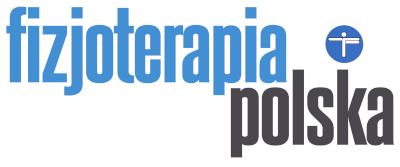Mohamed I. Roheym, Mona E. Morsy, Mahmoud Saber, Alaa A. Balbaa, Abdullah M, Al-Shenqiti
Mohamed I. Roheym, Mona E. Morsy, Mahmoud Saber, Alaa A. Balbaa, Abdullah M, Al-Shenqiti – Comparative study of the effectiveness of high-power laser and ketoprofen phonophoresis in chronic knees osteoarthritis. Fizjoterapia Polska 2023; 23(4); 196-201
DOI: https://doi.org/10.56984/8ZG20A657
Sažetak
Pozadina. Osteoartritis je jedan od glavnih uzroka invalidnosti i smanjene kvalitete života, karakteriziran progresivnim propadanjem zglobova. Smanjuje pokretljivost zglobova i uzrokuje bol, oticanje zglobova, deformacije i gubitak funkcije.
Cilj. Ispitati učinkovitost fonoforeze i terapije visokointenzivnim laserom na bilateralni osteoartritis koljena.
Dizajn. Prospektivno randomizirano dvostruko slijepo ispitivanje.
Postavka. Ambulantni švicarski centar za fizioterapiju.
Metode. Trideset pacijenata oba spola, u dobi od 50-65 godina, s dijagnosticiranim bilateralnim osteoartritisom koljena, odabrani su i nasumično dodijeljeni u dvije jednake skupine. Skupina (A) primala je jednu primjenu visokointenzivnog lasera NDYAG 1064 nm. Skupina (B) primala je jednu primjenu fonoforeze. Bol, teškoće i oticanje zglobova mjereni su ultrazvučnim nalazima i Western Ontario i McMaster sveučilišnim (WOMAC) indeksom osteoartritisa prije i nakon 10 sesija liječenja.
Rezultati. Statistička analiza provedena je korištenjem uparenog t-testa, koji je pokazao značajno poboljšanje u obje skupine. Dakle, postojala je značajna razlika između skupine (A) i skupine (B), pokazujući da je skupina (A) s visokim intenzitetom lasera učinkovitija od skupine (B) u pogledu boli, ukočenosti, funkcije i ultrazvučnih nalaza (p < 0,05).
Zaključak. Terapija visokim intenzitetom lasera pokazala je značajne rezultate u smanjenju boli, ukočenosti, poboljšanju funkcije i oticanju kod osoba s bilateralnim osteoartritisom koljena.
Ključne riječi
osteoartritis koljena, visokointenzivni laser, fonoforeza, ultrazvuk

